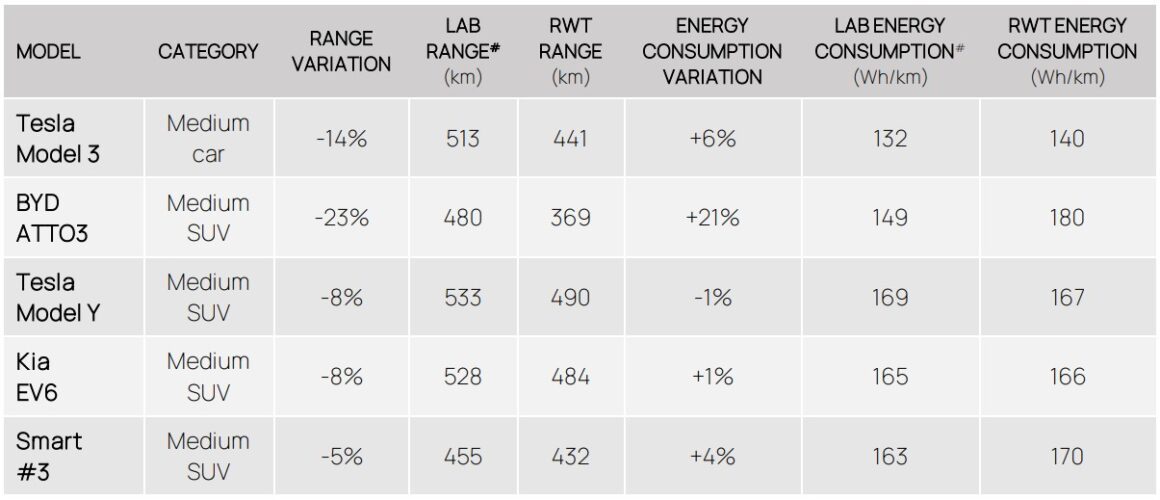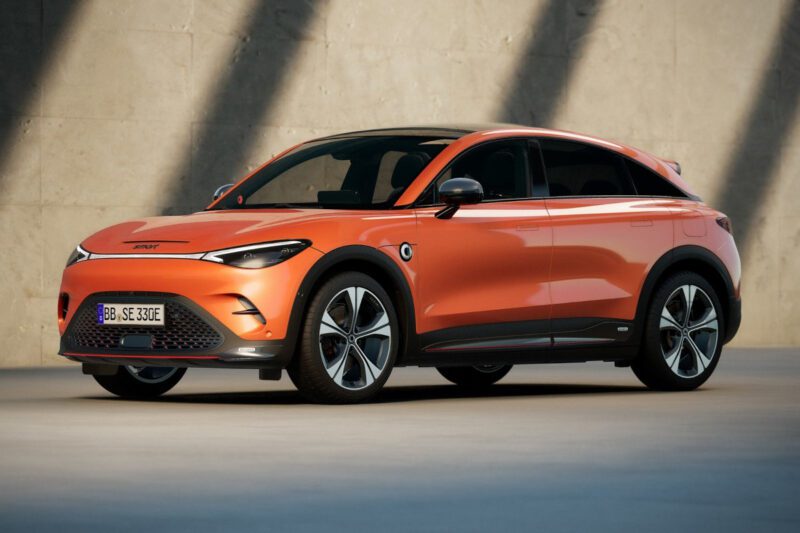The Australian Automobile Association (AAA), Australia’s peak motoring body, has revealed the first results from its first independent testing of electric vehicle (EV) driving range, finding real-world driving ranges vary from 5 per cent to 23 per cent less than claimed.
The AAA has conducted the tests under its Commonwealth-funded Real-World Testing Program, which tests whether EVs travel as far on a single battery charge as advertised by automakers.
Results from five cars were made public, including the Tesla Model 3, Tesla Model Y, BYD Atto 3, Kia EV6, and Smart #3.
The 2024 Smart #3 EV was the car to perform closest to its laboratory test results, with the AAA finding it deliver a rear-world driving range of 432 kilometres, 23 kilometres, or 5 per cent less, than the manufacturer promised.
According to the AAA, the 2022 Kia EV6 and the 2024 Tesla Model Y both had driving ranges coming in 8 per cent less than the manufacturer’s claims, while the 2024 Tesla Model 3 came in 14 per cent less than the 513 kilometres the manufacturer said it achieved in the lab.
The largest variation between AAA’s Real-World Testing Program and the manufacturer’s claims was the 2023 BYD Atto 3, which recorded a real-world range of 369 kilometres, 23 per cent less than the 480 kilometres reported by the manufacturer.

“As more EVs enter our market, our testing will help consumers understand which new market entrants measure up on battery range,” said Michael Bradley, managing director of the AAA.
“Our Program will bring confidence to Australian fleets and families looking to buy an EV.”
This is not the first time the Real-World Testing Program has delivered results, but so far it has been focused on internal combustion engine (ICE) and hybrid vehicles.
So far, the Program has published results for 114 ICE and hybrid vehicles, finding that 77 per cent of those cars exceeded the fuel consumption recorded in laboratory tests, and with one in five also exceeding noxious emissions limits.
The Real-World Testing Program tests cars on a 93-kilometre circuit in and around Geelong, Victoria, and uses strict protocols based on European regulations to ensure results are repeatable, and to minimise the impact of human factors such as driving style and changing traffic patterns.
When testing electric vehicles specifically, the Program measures EV range by quantifying both the energy needed to drive a vehicle around the test route as well as the energy needed to recharge each vehicle’s fully depleted battery. The tests also measure each vehicle’s energy consumption to determine the cost of operating the vehicle.
Joshua S. Hill is a Melbourne-based journalist who has been writing about climate change, clean technology, and electric vehicles for over 15 years. He has been reporting on electric vehicles and clean technologies for Renew Economy and The Driven since 2012. His preferred mode of transport is his feet.

